Packaging and presentation
[responsivevoice_button]
The rather nice glossy black box that the Conductor 3 arrived in is emblazoned with Burson Audio’s tagline: ‘Lavish Audio Experience’, and this promise certainly delivers – the Conductor 3 is a sumptuous product experience from start to finish.
As well as the unit itself, the Conductor 3 ships with a 24V / 3A external power supply, USB data cable, RCA cable, remote, and a spare fuse/op-amps and a hex key if you’re game enough to tinker under the hood (or roll op-amps down the road).
And next comes the main course. Other manufacturers: pack it up, head home. The Conductor 3 is simply the best-looking, best-built desktop unit I’ve encountered – at any price.
Build quality and design
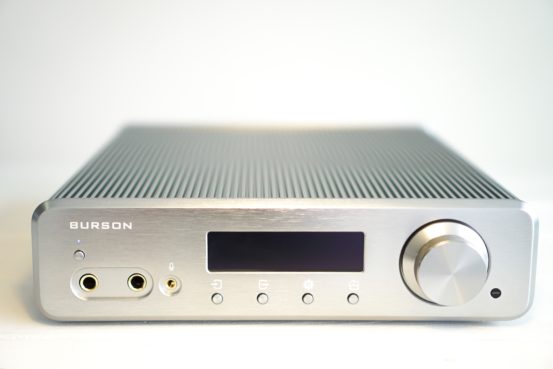
Burson Audio Conductor 3
The stand-out feature of the Conductor 3 is without a doubt the ‘finned’ Aluminium body that Burson Audio has dubbed ‘The Cool Case’. Besides looking awesome, this design has a functional purpose as well – being a Class-A design the Conductor 3 does dissipate quite a bit of heat. So instead of using unsightly heat-sinks, the entire chassis has been designed to keep the unit as cool as possible – 300% more than the previous Conductor, in fact (according to Burson).
Lifting-up the Conductor 3 reveals it to be reassuringly hefty, and solidly put together. The remainder of the Conductor 3’s body is an all-aluminium affair – the tastefully-brushed fascia sports the twin 6.3mm headphone outputs, the 3.5mm microphone input, a very nice knurled volume pot, and a multi-function display and control buttons.
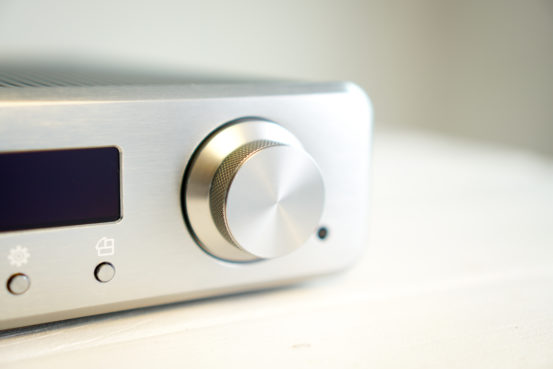
Burson Conductor 3
Previous Burson Audio products have employed only a basic LED input on their front panels, however, the Conductor 3 uses a large, multi-function display to continuously provide volume, input, output, and the sample rate of either PCM or DSD being decoded via the twin Sabre DACs. It’s tastefully implemented and adds a nice ‘face’ to the item that’s taking pride of place on your desktop (let’s face it, you wouldn’t exactly be hiding the Conductor 3 away under a stack of books).
User Interface and operation
The volume pot is rather nice to use – it’s a stepped attenuator that rolls infinitely upwards/downwards to select a volume setting between ‘00’ and ‘100’ on either low or high gain. It’s a very precise volume pot and feels super premium to the touch (great knob feel!). The volume pot is also used for navigation through the rather simple menus to select inputs/outputs and to change the device’s settings. Simply dial left/right to navigate through menus and ‘click’ the wheel to select. It’s fairly easy and intuitive, although because there’s a bit of play in the volume wheel you often find yourself clumsily selecting the wrong item.
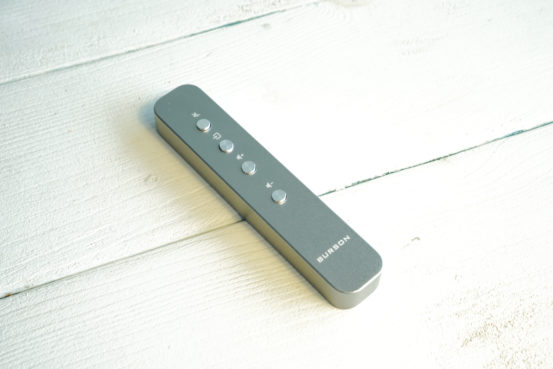
Burson Audio Conductor 3
The Conductor 3’s diminutive remote is genuinely well implemented. It only offers four settings: mute; volume up; volume down; and change inputs. The input selection switch is much easier to use than using the physical buttons/volume knob method, so I found myself using it often. While it’s only the size of the AA penlight, the little aluminium remote has a nice weight to it and helps to make the Conductor 3 a genuine option as a pre-amp in a two-channel set-up.
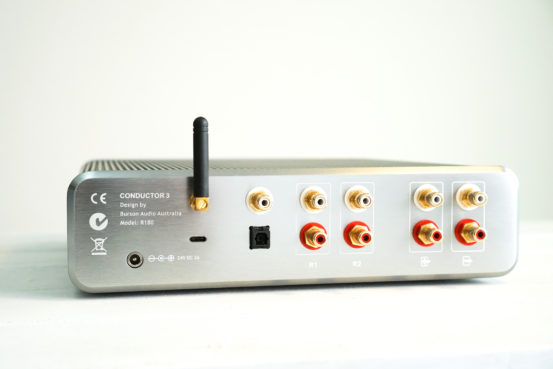
Burson Audio Conductor 3
Given the 2 x analogue RCA inputs and RCA pre-out, I was happily able to use the Conductor 3 in my two-channel set-up upstream from a power amp, controlling inputs between my Rega turntable and Nakamichi CD player via the analogue inputs, Chromecast Audio via Optical, and my Macbook via USB. The DAC line-out meant I was able to send an analogue signal from the very capable ES9038Q2M DACs to my tube amp when I felt like changing things up (which, to be honest, wasn’t all that often).
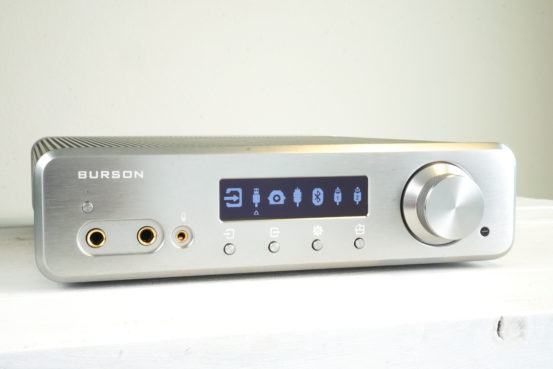
Burson Audio Conductor 3
I’m not a PC-gamer (and nor does the manual have much by way of detail regarding the microphone input) but if you are, then the Conductor 3’s mic input will no doubt come in handy if you plan on having a DAC/amp that lives at the heart of your desktop PC build.
Just to go back to the subject of the manual for a moment – it is extremely sparse for a product of this complexity and expense. Sure, the controls are fairly intuitive, but Burson doesn’t provide much by way of explanation for how the Conductor 3 operates, nor for what the discrete digital settings actually do.
Bluetooth
The Conductor 3 features a Qualcomm/CSR8675 Bluetooth 5.0 receiver capable of using aptX HD audio codec. Burson states that this “…pushes Bluetooth playback beyond CD quality and ease of use to the highest level”. I often listen to music fairly casually for enjoyment, rather than for out-and-out critical listening. For example, I might be doing some reading for work, or I might be walking around doing some work around the house. In those situations, convenience is super critical, especially in two-channel/pre-amp duties. So for that reason, the inclusion of Bluetooth to the Conductor 3 is a very welcome one for me – especially with a higher-res codec that I’m able to make use of with my Android devices. aptX HD playback on the Conductor 3 with lossless FLAC files sounds perfectly transparent to my ears in terms of detail, but of course, it does give up some tonality and absolute resolution to wired options which I’ll use when I’m in listening mode.
Vertical orientation
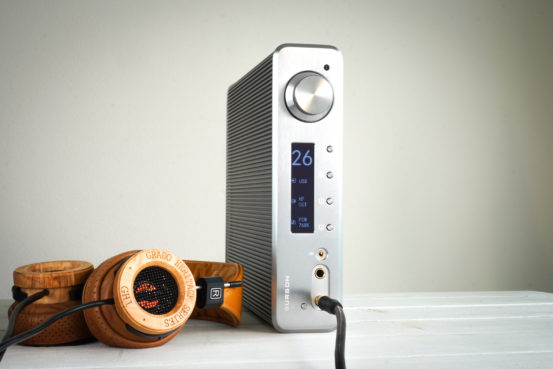
Burson Conductor 3
The fourth button on the front fascia is slightly intriguing (at first). Press, it and the characters on the screen rotate 90 degrees. Now, there’s nothing in the product manual that explicitly tells you this, but the Conductor 3 can be used vertically, based on its side. This might be super handy if real estate is at a premium on your desktop, but I’d recommend against it – it doesn’t feel the steadiest. Add a bunch of connections to the rear of the unit, and connect your headphones to the front and you potentially have a recipe for disaster if something accidentally tugs at them. Or if you have cats (I have two).
Click-over to page 3 to hear how the Conductor 3 performs in terms of power, and sound quality.





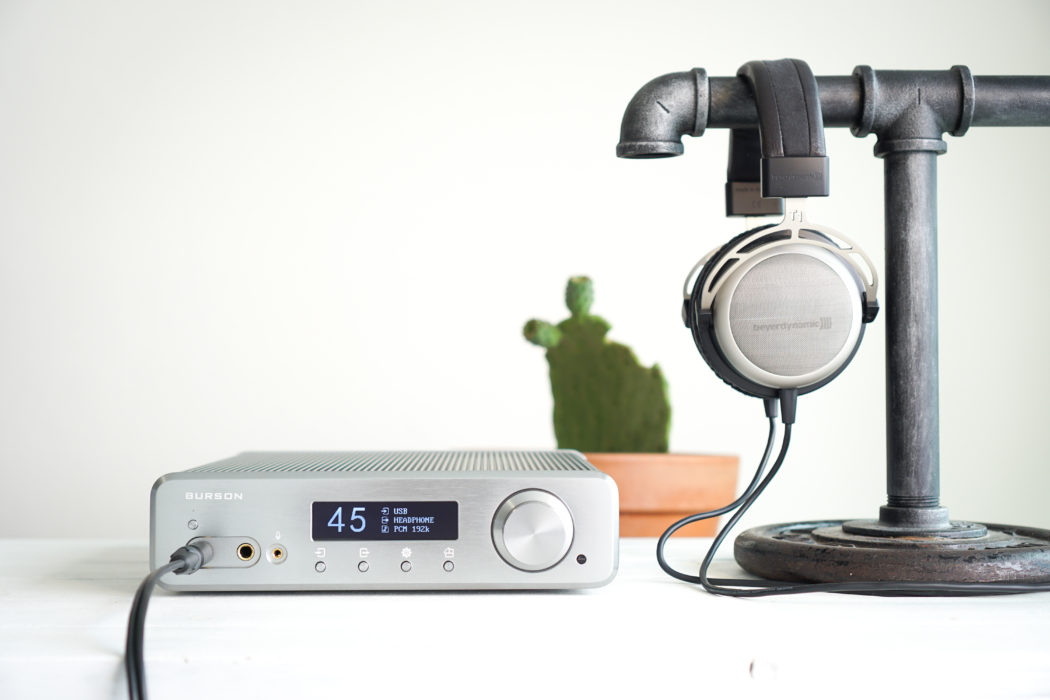

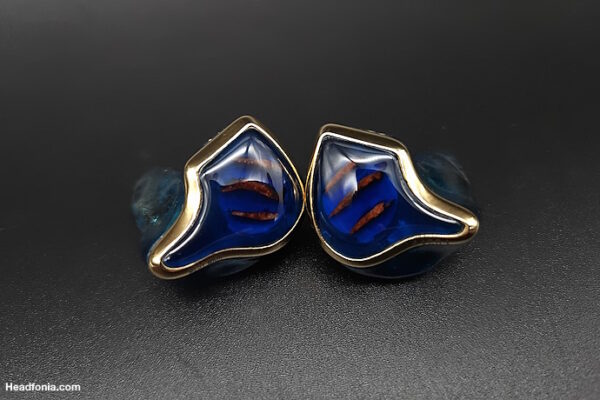
Maxx
I have a JDS labs Element 2. If I upgrade to this one, will there be a huge difference? Thanks.
Matty Graham
Not enormous to be honest…for most headphones. The main differences will be in connectivity, liveability, and form-factor. The differences sonically will be ‘nuances’ more than anything else.
Maxx
Thanks very much, Matty!
Viktor
Thank you for this great review! I think to buy either Burson Audio Conductor 3 or Mytek Brooklyn DAC+. I see headfonia reviewed for Mytek as well. Are they in the same level? Are there any differences in sound?
Matty Graham
Cheers Viktor! Linus reviewed the Brooklyn, and without having heard them back-to-back I couldn’t tell you. I’m pretty confident that you’ll manage to get excellent headphone performance out of either. The Brooklyn has a phono stage which is a bonus if you’re a vinyl listener.
Viktor Rad
Thank you Matty, I lean towards Brooklyn 🙂
Viktor Rad
I eventually bought Conductor 3 Reference. Breathtaking with my Hifiman Arya. High-end musical bliss. I can’t stop listening to music now 🙂
Federico
Hi,
have you tried it with the Meze Empyrean?
How is this pairing?
Is there noticeable background noise?
Thank you
Maris
I tried this amp with ZMF Verite.
There was very noticeable background noise.